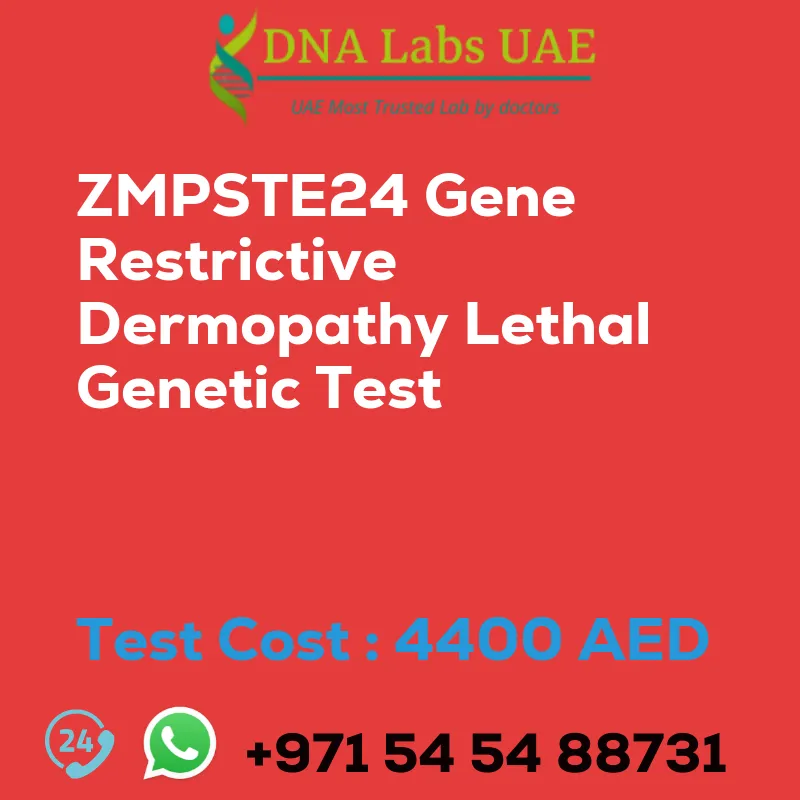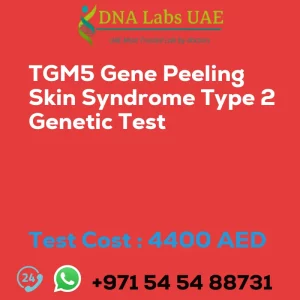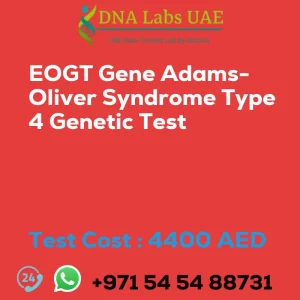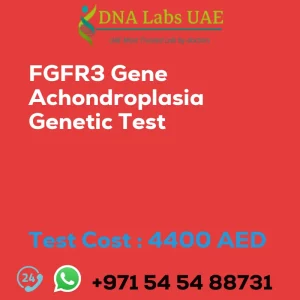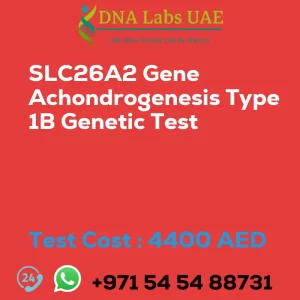ZMPSTE24 Gene Restrictive Dermopathy Lethal Genetic Test
Welcome to DNA Labs UAE, where we offer the ZMPSTE24 Gene Restrictive Dermopathy Lethal Genetic Test. This test is designed to diagnose and provide information about restrictive dermopathy, a rare genetic disorder characterized by extremely tight, thick skin that restricts movement and growth.
Test Details
The ZMPSTE24 Gene Restrictive Dermopathy Lethal Genetic Test is performed using NGS (Next-Generation Sequencing) technology. This technique allows for the analysis of multiple genes simultaneously, including the ZMPSTE24 gene and other genes associated with restrictive dermopathy.
Components
- Test Name: ZMPSTE24 Gene Restrictive Dermopathy Lethal Genetic Test
- Price: 4400.0 AED
- Sample Condition: Blood or Extracted DNA or One drop Blood on FTA Card
- Report Delivery: 3 to 4 Weeks
- Method: NGS Technology
- Test Type: Osteology Dermatology Immunology Disorders
- Doctor: Dermatologist
- Test Department: Genetics
Pre Test Information
Prior to the ZMPSTE24 Gene Restrictive Dermopathy Lethal Genetic Test, it is important to provide the clinical history of the patient. Additionally, a genetic counseling session may be conducted to draw a pedigree chart of family members affected by restrictive dermopathy and the ZMPSTE24 gene.
Symptoms and Diagnosis
Restrictive dermopathy is characterized by extremely tight, thick skin that restricts movement and growth. It is caused by mutations in the ZMPSTE24 gene, which provides instructions for making an enzyme called zinc metalloproteinase STE24. This enzyme is involved in the post-translational modification process, specifically removing a farnesyl group from a protein called prelamin A. Mutations in the ZMPSTE24 gene result in the production of an abnormal or non-functional enzyme, leading to the accumulation of a toxic form of the protein in cells. This disrupts the normal structure and function of the cell nucleus, causing the characteristic features of restrictive dermopathy.
Lethal Restrictive Dermopathy
Lethal restrictive dermopathy refers to a severe form of the disorder that is usually fatal before or shortly after birth. This form is distinguished from milder variants of restrictive dermopathy that may have a less severe impact on lifespan.
Genetic Counseling and Treatment
NGS genetic testing for restrictive dermopathy can be helpful for genetic counseling, family planning, and potentially guiding treatment decisions. However, it is important to note that there is currently no cure for restrictive dermopathy, and treatment primarily focuses on managing symptoms and providing supportive care.
| Test Name | ZMPSTE24 Gene Restrictive dermopathy lethal Genetic Test |
|---|---|
| Components | |
| Price | 4400.0 AED |
| Sample Condition | Blood or Extracted DNA or One drop Blood on FTA Card |
| Report Delivery | 3 to 4 Weeks |
| Method | NGS Technology |
| Test type | Osteology Dermatology Immunology Disorders |
| Doctor | Dermatologist |
| Test Department: | Genetics |
| Pre Test Information | Clinical History of Patient who is going for ZMPSTE24 Gene Restrictive dermopathy, lethal NGS Genetic DNA Test. A Genetic Counselling session to draw a pedigree chart of family members affected with ZMPSTE24 Gene Restrictive dermopathy, lethal NGS Genetic DNA Test gene ZMPSTE24 |
| Test Details |
Restrictive dermopathy is a rare genetic disorder characterized by extremely tight, thick skin that restricts movement and growth. It is caused by mutations in the ZMPSTE24 gene. The ZMPSTE24 gene provides instructions for making an enzyme called zinc metalloproteinase STE24. This enzyme is involved in a process called post-translational modification, which is necessary for the proper processing of certain proteins. Specifically, it is responsible for removing a small piece called a farnesyl group from a protein called prelamin A. Mutations in the ZMPSTE24 gene lead to the production of an abnormal enzyme or a complete lack of enzyme function. This impairs the processing of prelamin A, resulting in the accumulation of a toxic form of the protein in cells. This abnormal accumulation disrupts the normal structure and function of the cell nucleus, leading to the characteristic features of restrictive dermopathy. NGS (Next-Generation Sequencing) genetic testing is a technique used to analyze multiple genes simultaneously. It allows for the detection of mutations in the ZMPSTE24 gene and other genes associated with restrictive dermopathy. This type of testing can help confirm a diagnosis and provide information about the specific genetic cause of the condition. Lethal restrictive dermopathy refers to a severe form of the disorder that is usually fatal before or shortly after birth. The term “lethal” is used to distinguish this form from milder variants of restrictive dermopathy that may have a less severe impact on lifespan. NGS genetic testing for restrictive dermopathy can be helpful for genetic counseling, family planning, and potentially guiding treatment decisions. However, it is important to note that there is currently no cure for restrictive dermopathy, and treatment primarily focuses on managing symptoms and providing supportive care. |

